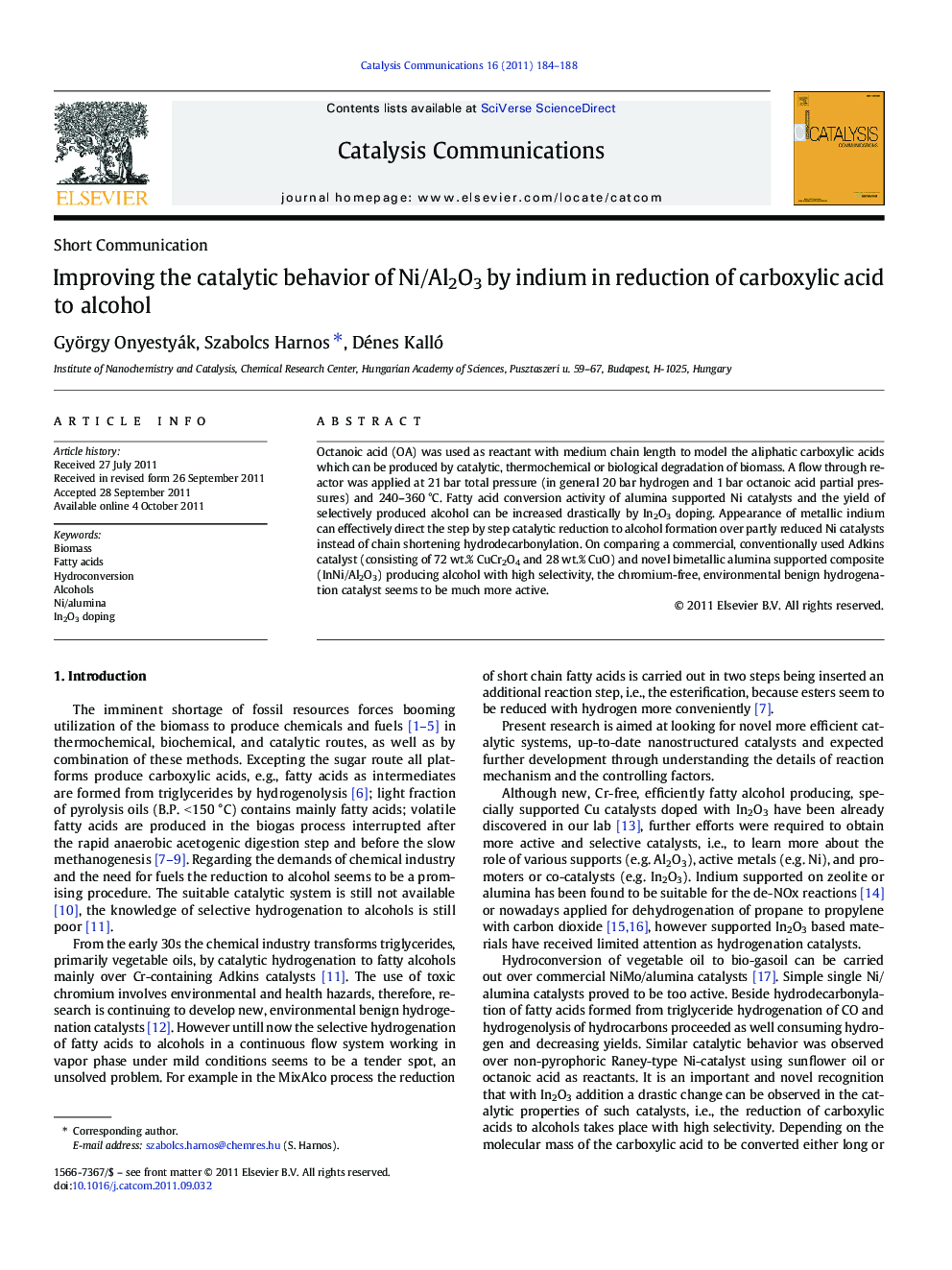| Article ID | Journal | Published Year | Pages | File Type |
|---|---|---|---|---|
| 51587 | Catalysis Communications | 2011 | 5 Pages |
Octanoic acid (OA) was used as reactant with medium chain length to model the aliphatic carboxylic acids which can be produced by catalytic, thermochemical or biological degradation of biomass. A flow through reactor was applied at 21 bar total pressure (in general 20 bar hydrogen and 1 bar octanoic acid partial pressures) and 240–360 °C. Fatty acid conversion activity of alumina supported Ni catalysts and the yield of selectively produced alcohol can be increased drastically by In2O3 doping. Appearance of metallic indium can effectively direct the step by step catalytic reduction to alcohol formation over partly reduced Ni catalysts instead of chain shortening hydrodecarbonylation. On comparing a commercial, conventionally used Adkins catalyst (consisting of 72 wt.% CuCr2O4 and 28 wt.% CuO) and novel bimetallic alumina supported composite (InNi/Al2O3) producing alcohol with high selectivity, the chromium-free, environmental benign hydrogenation catalyst seems to be much more active.
► Carboxylic acid hydroconversion to alcohol can be increased by In2O3 doping. ► Metallic indium near nickel can direct the step by step catalytic reduction. ► Product distribution obtained is determined by the presence of an InNi alloy phase. ► In2O3 doping for fatty acid reduction opens a novel route for catalyst development.
